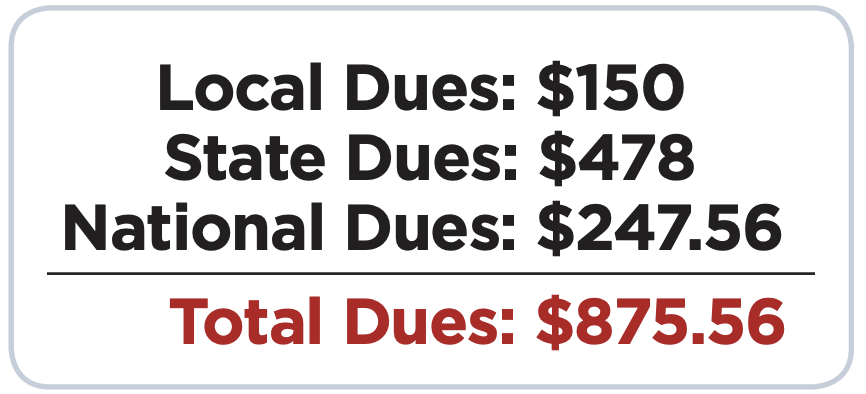Where do teachers’ union dues go?
Teachers who are newly-freed to reject paying union dues may want to think about where those dues go.
Every year, Minnesota’s teachers’ union deducts roughly $800 to $1,000 from its members’ paychecks. Because dues are taken out as a single deduction before the paycheck is received (like taxes), teachers tend to not know the exact amount deducted or how the dues are disbursed. Teachers just know they benefit from paying these dues because, they are told, they go toward a wide variety of benefits including counsel on workplace issues and collective bargaining.
But these services are performed at the local union level, and the largest proportion of union dues goes toward underwriting the political clout of the mammoth state and national unions. Teachers who are union members must affiliate with these other union organizations and fund their political objectives. In Minnesota, members pay union dues to their local union, their state union Education Minnesota, and the state union’s two national affiliates—the National Education Association (NEA) and the American Federation of Teachers (AFT).
While local dues vary among school districts, state and national dues are levied across-the-board and typically increase every year. Local dues tend to hold steady.
Here is a breakdown from one school district for the 2018-2019 school year:

In this example, the local union receives only 17 percent of dues, despite conducting all the representational and day-to-day activities on behalf of teachers. (Other school districts with publicly available dues data range from 17 percent to 20 percent of dues staying local. Information on allocation of dues is hard to obtain because the majority of this data is stonewalled behind union member login requirements.)
The allocation of dues is striking. The union’s primary function is collective bargaining, and most of the costs associated with this are incurred at the local level. Yet, the local receives the smallest portion of dues revenue. The bulk of dues, spent at the state and national levels, focuses on funding administrative costs and political objectives.
In the 2016-2017 school year, Education Minnesota’s expenditures amounted to $66.2 million. Aside from dues disbursements to union affiliates ($17.9 million) and the money spent on investments and fixed assets ($10.8 million), the largest expenditures were on union administration costs ($13.3 million) and benefits ($8.6 million) and general overhead ($5.9 million).
Spending on political activities and lobbying increased by about $1.4 million, from $1.3 million in 2015-2016 to $2.7 million in 2016-2017, whereas spending on representational activities only increased by $193,000 ($2.7 million to $2.9 million). The union self-identifies its political activities and lobbying expenditures in its filings, but this is not the only category where political funding occurs, despite the union reporting it as such.
Thanks to the Janus v. AFSCME case decided in June 2018, Minnesota teachers have a meaningful choice on whether to financially support a union. The battle is on for their wallets, and the union must convince its members its priorities are worth the money. As teachers weigh their options, it is important for them to know that less than a quarter of their dues go to the local union responsible for most union benefits. The rest gets eaten up in a political maelstrom.